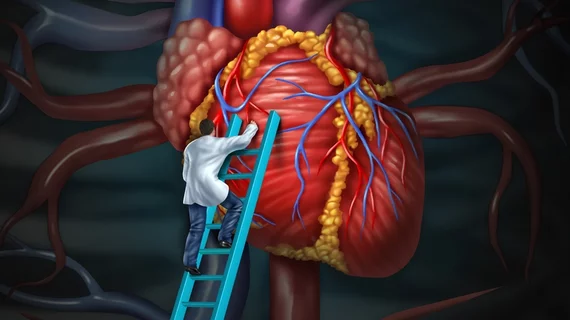Ross procedure outperforms bioprosthetic aortic valve replacement among younger patients
The Ross procedure may be a better treatment option for young and middle-aged patients undergoing aortic valve replacement (AVR) than a bioprosthetic heart valve, according to new data published in the Journal of the American College of Cardiology.[1]
“Unlike mechanical and bioprosthetic valves — which are nonliving substitutes — the Ross procedure allows for long-term viability of the neo-aortic valve,” wrote first author Amine Mazine, MD, a cardiac surgery specialist with the University of Toronto, and colleagues. “The living nature of the pulmonary autograft allows for adaptive remodeling and confers a hemodynamic profile similar to that of the native aortic valve. These unique properties translate into excellent long-term clinical outcomes, as shown in several contemporary longitudinal studies conducted across the world. Despite this, the Ross procedure continues to be criticized because of concerns over surgical complexity, exposure to a broad spectrum of complex reoperations, and the notion of transforming a single-valve disease into a double-valve disease.”
Mazine et al. examined data from nearly 800 patients between the ages of 16 and 60 who underwent either the Ross procedure or bioprosthetic AVR at a single facility from 1990 to 2014. Patients who presented with active endocarditis, acute aortic dissection or end-stage renal disease, and those who required emergency surgery were excluded from the team’s analysis. Ross and bioprosthetic AVR patients were matched using propensity score matching; this resulted in 108 pairs of matched patients.
The median age for those 108 pairs of matched patients was 41 years old, and 69% of patients were male. The mean follow-up period was 14.5 years.
Overall, the team found, a total of 28 patients died during the follow-up period. This included 6.5% of Ross patients and 19.4% of bioprosthetic AVR patients. All-cause mortality after 20 years was “significantly lower” among Ross patients (9.6%) than it was among bioprosthetic AVR patients (25.1%).
The Ross procedure was also associated with lower rates of reintervention, valve deterioration, thromboembolic events and permanent pacemaker implantation.
A high risk of reintervention after the Ross procedure, the authors explained, is “considered by many to be its Achilles’ heel.” In this analysis, however, the reintervention rate after the Ross procedure was just 11.3% after 20 years — much lower than the 56.8% seen after bioprosthetic AVR.
“This supports the view — held by our group and others — that with proper technical refinements, the Ross procedure can yield excellent durability, including in patients with suboptimal anatomical substrates,” the group wrote. “Furthermore, no operative mortality was observed among the 11 patients in the Ross group who required reintervention. As such, our findings also argue against the notion that the Ross procedure invariably exposes patients to a wide range of complex reoperations associated with substantial mortality.”
The team did call for additional research, including studies that cover a wider variety of locations and specialists. However, they concluded, if similar results are seen in other studies, the Ross procedure “may be considered the preferred option for selected young and middle-aged adults undergoing AVR.”
Related Cardiac Surgery Content:
Life after heart surgery: Tracking the long-term performance of several bioprosthetic aortic valves
Pig heart transplant patient doing well weeks after procedure—he even watched the Super Bowl
Debate over? On-pump CABG, off-pump CABG lead to similar 10-year outcomes
Left main PCI still safe at hospitals without onsite cardiac surgery
Reference:

